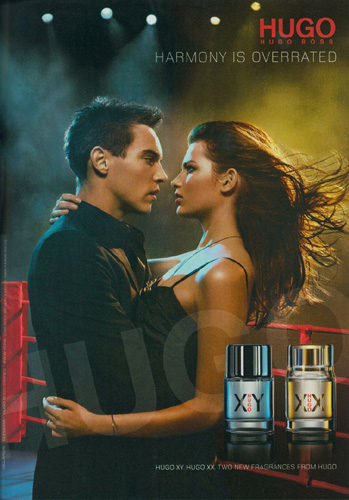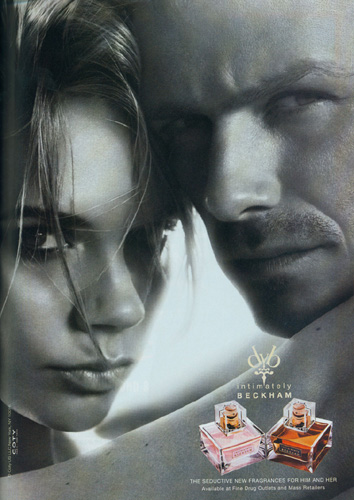|
Throughout three of the advertisements, marriage is symbolized in some form or fashion. Beginning with Calvin Klein's Eternity, the textual salience of the
fragrance's name "Eternity" serves as an anchorage to the image of the embracing couple centrally located within the ad. Not only does the word "eternity" bring
together ideas of marriage for the couple, it also works in relation with the infamous promise that is made during the marriage ceremony - "until death do us part".
Marriage is still understood by many to be a life of eternity with their partner - or at least that is the goal! And if any doubt is left to the reader whether
"Eternity" is related to marriage, they can look to the woman's ring finger where she wears a wedding band. This sensual moment between woman and man is not just a fling.
With the anchorage of the "Eternity" we see the relationship to be an eternal timeless love with a spouse, like the partnered
"timeless fragrance for men and women" (Nov 79). Further supporting the discourse of marital female-male relationships within fragrance advertisements, we see the mortise
of the Nude fragrance bottles in the Bijan ad. Both fragrance bottles are iconic of a diamond ring, "having a likeness to it" (Rose 83). With the circular opening in
the center of the bottles (where a ring finger would go), as well as a heightened diamond-esque plug at the top, the two bottles take on this iconic role with the
accompanying intertextuality of the male-female image. To create a marriage, Cosmoploitan's tips and strategies tell the reader they just need a man and the
marriage symbol of the diamond ring - both presented in the Bijan ad! Lastly, we see the socially famous married couple, The Beckham's, advertising their own line of
fragrance. Because they are a globally recognized husband and wife pair, their advertisement holds a claim of truth to what it says about its fragrances - "seductive"
(March 79), as well as a truth to the power of fragrances as a whole. With this discourse at work, what
Cosmopolitan reader would not think to want a relationship like theirs, or a husband like David Beckham?!? The right fragrance then is not only key to winning the diamond
ring, but also key to keeping it.
|



